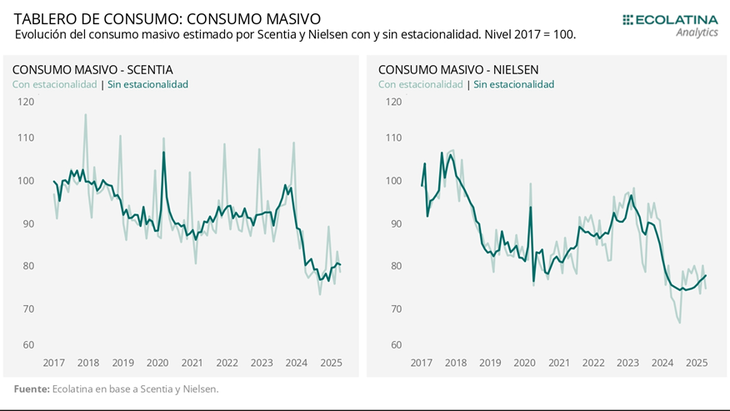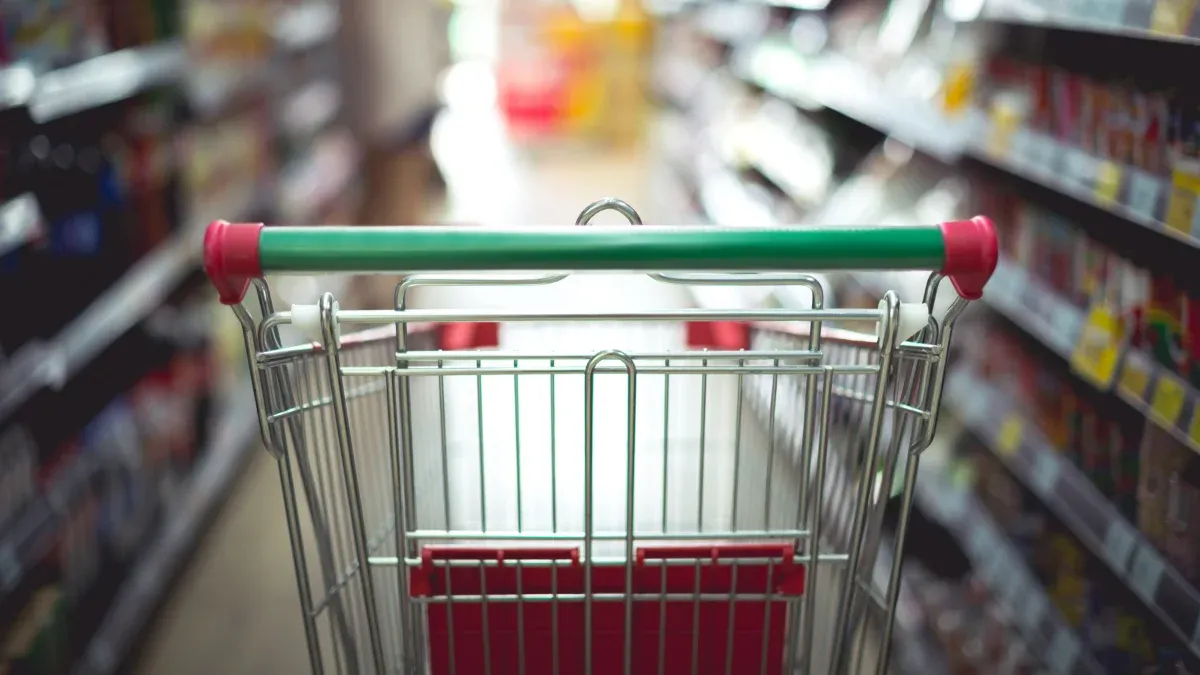The change of course in the economic policy imposed by the current government is having deep consequences on consumptionas results from the analysis of different consultants. The modification of relative prices or the resurgence of credit modifies purchase behaviors. In this sense, In the first quarter of the year there was a marked recovery in the consumption of durable and semi -durable goods, with an average growth of 56.5%against the same period of 2024, while, on the contrary, Non -durable consumption fell 3.8%according to a report released this week by the PXQ consultant.
After the devaluation of December 2023, The purchasing power of the salary was recovering in relation to the value of durable goods. For example, according to a calculation of the consultant who directs Emanuel Álvarez Agisbetween November 2023 and last April, The purchasing power of salaries improved 3% in relation to the price of a mid -range car.
The opposite happens when the comparison is made between income and different non -durable goods, such as cases of the gasoline that was increased 29% or the milk that increased 13%.
Precisely, as a consequence of the decision to dismantle subsidies to public services, official driving carried out a process adjustment process that hit household budgets. PXQ points out that Expenditure on housing, water, electricity, gas and other fuels now takes almost 7% in family spendingsince it went from representing 22.8% of the salary in November 2023 to 29.6% last April.
Another fact that this consultant contributes is that different speeds are verified in consumption since, with numbers last April, Expenses linked to recreation (shopping and recovered more than those destined for essential products (supermarkets and wholesalers).
Import advance also affects the consumption map. Product of commercial opening and the appreciation of the exchange rate, External purchases have been increasing at a firm pace, highlighting the increases in durable and semi-durable goods, sectors where demand shows a better performance.
Image (7) .png
PXQ Source Consultant
Imports
Imports of appliances and furniture grew 198.6% in the first four -month period of the current year against the 2024 room. In the same period, external purchases of vehicles fired 101.6%, as well as those of food and drinks- prepared 86.7%, basic 83.9%- and clothing, shoes and other articles 75.3%.
The advance of the imported is particularly notorious in the case of the automotive sector. After the change of government, the participation of national cars in sales fell 30%, in favor of the imported, PXQ points out. Thus the tendency of the previous management was reversed, when national vehicles predominated. Last April, two out of three patented cars were imported.
The growth of durable goods is also linked to the highest loan provision. Between the fourth quarter of 2023 and March 2025, personal loans grew on average an average% at the national levelaccording to Ecolatina. According to this consultant, it can be hypothesized that it will contrast it from a greater credit to households is a more thriving durable goods that pushes down to the purchase of mass consumption goods.
A particularity, The credit expansion was stronger inside. In Greater Buenos Aires the increase was 62%, while in the interior of the country it reached 76%, a difference of almost 15 percentage points.
Image (8) .png

Partial recovery
The latest measurements reveal that Recovery is reaching mass consumption. This indicator had a 5.5% advance in May, as the Scentia consultant has just reported. In this way, the accumulated so far this year showed for the first time a positive variation, of 0.6%. Nielsen, on the other hand, recorded an interannual advance of 2.8% in April.
These data are consistent with the recomposition that wages are experiencing. The registered rose 10.8% year -on -year last March, according to the last measurement of INDEC.
Seen in perspective, mass consumption would be leaving one of his worst cycles. In 2024 it had a 13.9% drop, one of the deepest since the beginning of the century and is still about 20% below the level reached in 2017.
Source: Ambito




